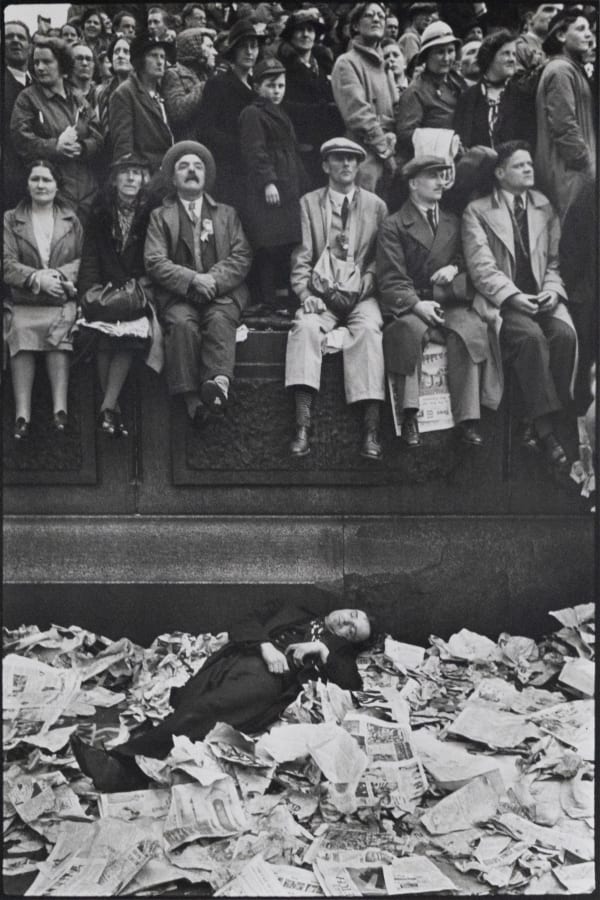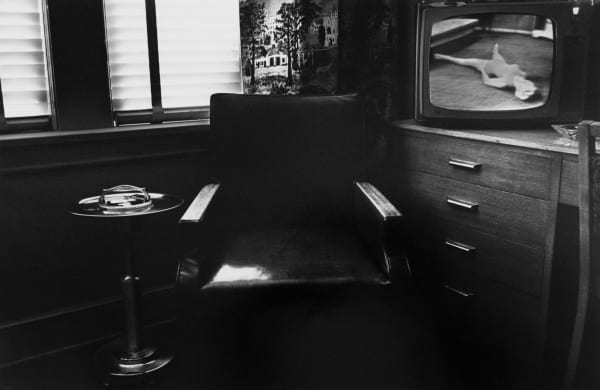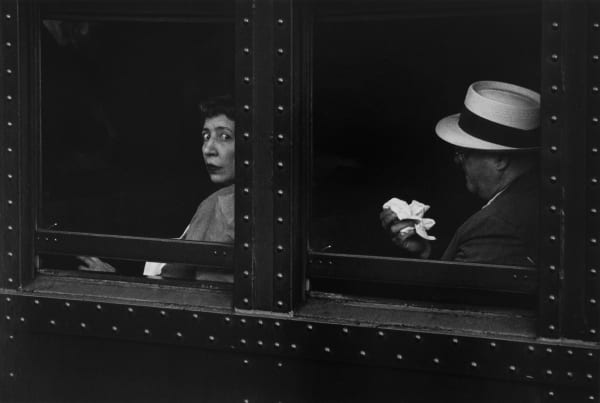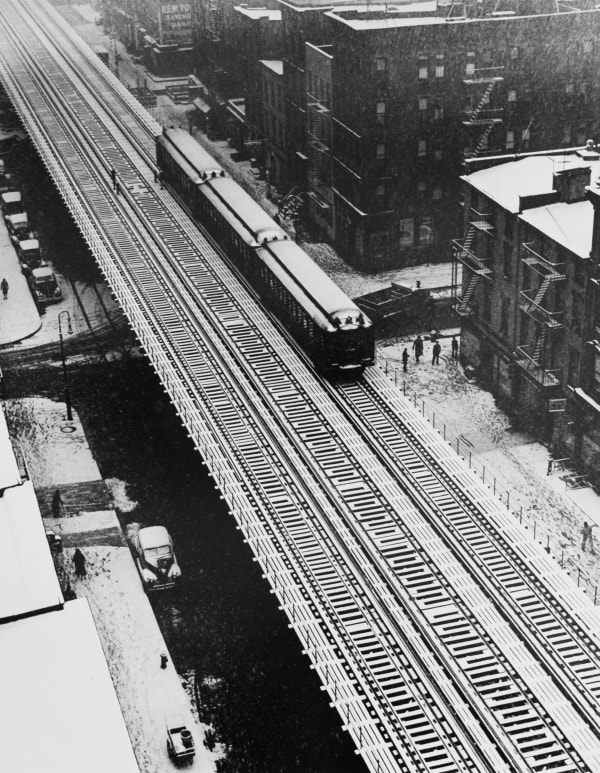-
 We are thrilled to offer a curated selection of 30 works from the remarkable collection of St. Louis photographer and collector David Capes. His collection, which began in the 1990s, has grown to include iconic works by celebrated photographers such as Julie Blackmon, Man Ray, Lee Friedlander, Annie Leibovitz, André Kertész, Alfred Stieglitz, August Sander, and many others.
We are thrilled to offer a curated selection of 30 works from the remarkable collection of St. Louis photographer and collector David Capes. His collection, which began in the 1990s, has grown to include iconic works by celebrated photographers such as Julie Blackmon, Man Ray, Lee Friedlander, Annie Leibovitz, André Kertész, Alfred Stieglitz, August Sander, and many others. -

Annie Leibovitz, Mikhail Baryshnikov and Linda Dowdell, 1990
SOLD
-

August Sander, Wife of the Painter Peter Abelen, 1927- 28
SOLD
-

Louise Dahl-Wolfe, Twins at the Beach, 1949
-
-

Berenice Abbott
5th Ave Row Houses, 1936Silver gelatin print
Image: 10 5/8 x 13 1/2 inches
Mount: 20 x 16 1/16 inchesEdition 28 of 50SOLD -
-

Marc Riboud, The painter of the Eiffel Tower, Paris, 1953
-
Ray K. Metzker (1931 - 2014) spent over fifty years creating remarkable and influential photographs, quietly establishing himself as a significant figure in American photography. Recognized as a master of his craft, Metzker passionately explored the medium throughout the latter half of the 20th century and into the 21st century.Born in Milwaukee in 1931, Metzker attended the Institute of Design in Chicago, known as the New Bauhaus, from 1956 to 1959. His work reflected the avant-garde photography traditions that had emerged in Europe in the 1920s. Early in his career, Metzker's photographs exhibited a unique intensity, utilizing techniques such as composites, multiple exposures, superimposition of negatives, image juxtapositions, and solarization. He was dedicated to exploring the possibilities of black and white photography, both in capturing images and in the printing process, demonstrating exceptional skill at each stage. Metzker's evolving mastery of light, shadow, and line transformed ordinary scenes into visual delights.Metzker began gaining attention from major American museums in the 1960s. The Museum of Modern Art in New York featured his first solo exhibition in 1967, solidifying his reputation. Retrospectives of his work were organized by the International Center of Photography in New York in 1978 and the Museum of Fine Arts in Houston in 1984. These exhibitions traveled to several other prominent institutions, including the San Francisco Museum of Modern Art, the Art Institute of Chicago, the Philadelphia Museum of Art, the High Museum of Art in Atlanta, the International Museum of Photography in Rochester, and the National Museum of American Art in Washington, DC. In 2011, the Nelson-Atkins Museum of Art in Kansas City curated a major retrospective of Metzker's work, which was later displayed at the J. Paul Getty Museum in Los Angeles and the Henry Art Gallery in Seattle.
-

Man Ray, La Ville, 1931
SOLD
Spotlight: The Collection of David Capes: from our Private Collections Salon & Sale
Past viewing_room































